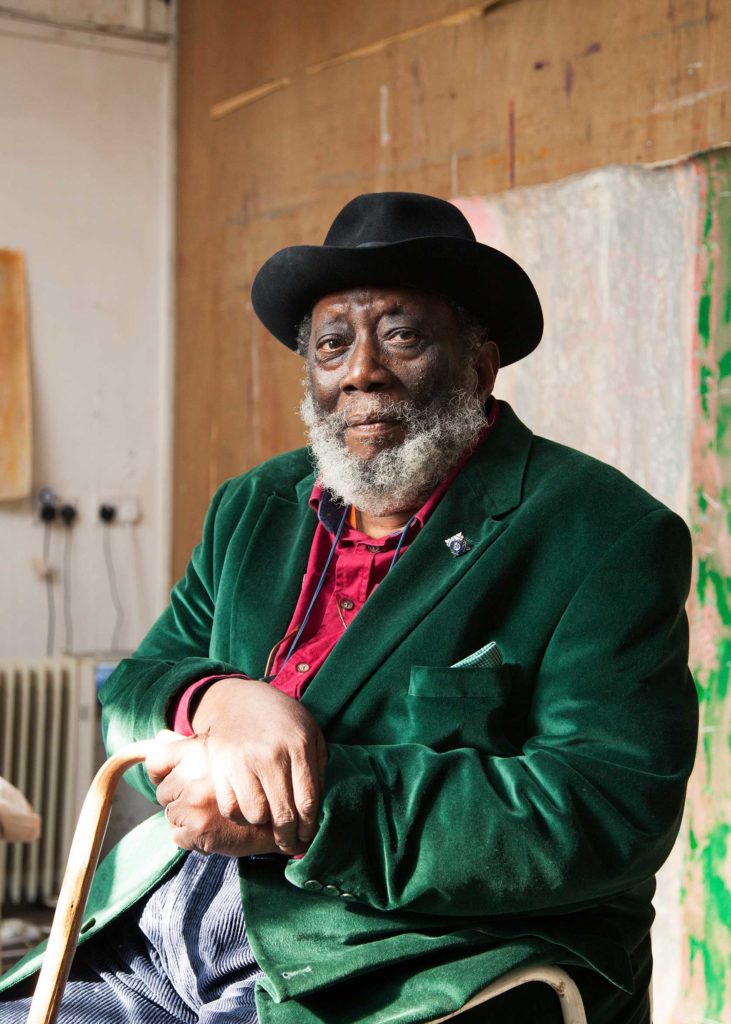Frank Bowling exhibit probes painter’s political, artistic evolution

“Frank Bowling’s Americas,” on view at the Museum of Fine Arts Boston through April 9, 2023, highlights a specific and prolific period of the dynamic British artist’s career. Bowling spent a decade living in New York City, and his work from that time is imbued with the energy and experimentation he found in the United States art scene. This exhibition showcases that evolution and the social factors that influenced it.

Middle Passage, 1970. Frank Bowling (British, born in 1934) Synthetic polymer paint, silkscreen ink, spray paint, wax crayon, and graphite on canvas 310.5 × 310.5 cm (122 1/4 × 122 1/4 in.). Menil Collection, Houston. Image by Adam Neese. © Frank Bowling. All rights reserved, DACS, London & ARS, New York 2022. Courtesy Museum of Fine Arts, Boston
“To have an exhibition of this scale in the U.S. after so much time has passed is a real thrill … It gives me a kick to see all these paintings together and be reminded of what an exciting place New York was for art and artists in the 1960s and 70s,” says Bowling.
The exhibition is rich in large, color-soaked abstract canvases. While studying in London, Bowling’s work was more figurative; the pieces in “Frank Bowling’s Americas” show a dive directly into abstraction, utilizing bold hues and textures to create movement and emotion. Many of the paintings are acrylic on canvas, often poured rather than painted on with a brush, but others incorporate spray paint, silkscreen, wax crayon, graphite and polymer paint.

Mel Edwards Decides, 1969 Frank Bowling (British, born in 1934) Acrylic and spray paint on canvas 293.1 × 261 cm (115 3/8 × 102 3/4 in.) Private Collection, Courtesy of Adam Green Art Advisory. Image: Green Family Art Foundation, courtesy of Adam Green Art Advisory. © Frank Bowling. All rights reserved, DACS, London & ARS, New York 2022. Courtesy Museum of Fine Arts, Boston
Color theory isn’t the only avenue Bowling explored. While visiting New York, he was highly engaged in socio-political issues, including debates and teaching about Black cultural identity and artistry. His time in the U.S. during the 1960s coincided with the rise of the Black Power movement, and Bowling was vocal in the cry for African American freedom, equality and empowerment.
“The years during which New York was Bowling’s primary residence not only mark a chapter of astonishing innovation in his painting, but also active engagement with the vital debates among Black artists regarding forms their artistic practice should take,” says exhibit curator Reto Thüring, “and where and how Black artists — long excluded from U.S. museums — should exhibit their work.”
These dialogues led Bowling in 1969 to organize “5+1,” an exhibition at Stony Brook University highlighting five African American artists also working in abstraction: Melvin Edwards, Daniel LaRue Johnson, Al Loving, Jack Whitten and William T. Williams, along with work by Bowling himself. In homage to that, the MFA is partnering with Stony Brook to generate scholarship around the exhibition and create two satellite shows, one at Stony Brook and one at UMass Boston, illustrating the significance of the initial “5+1” exhibition and the artists involved.
“Frank Bowling’s Americas” is organized chronologically, so visitors can watch as the artist experimented with new mediums and methods inspired by the vibrant New York abstraction scene. It illustrates a period of both artistic growth and political engagement.
“America gave me the freedom to make the art that I wanted to make and allowed me to forge my own path,” says Bowling. “It was incredibly liberating.”






